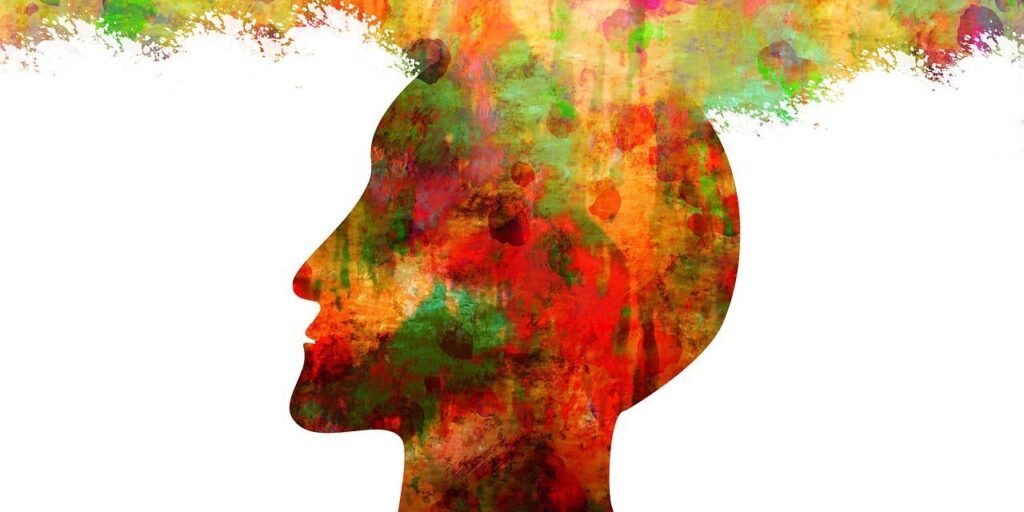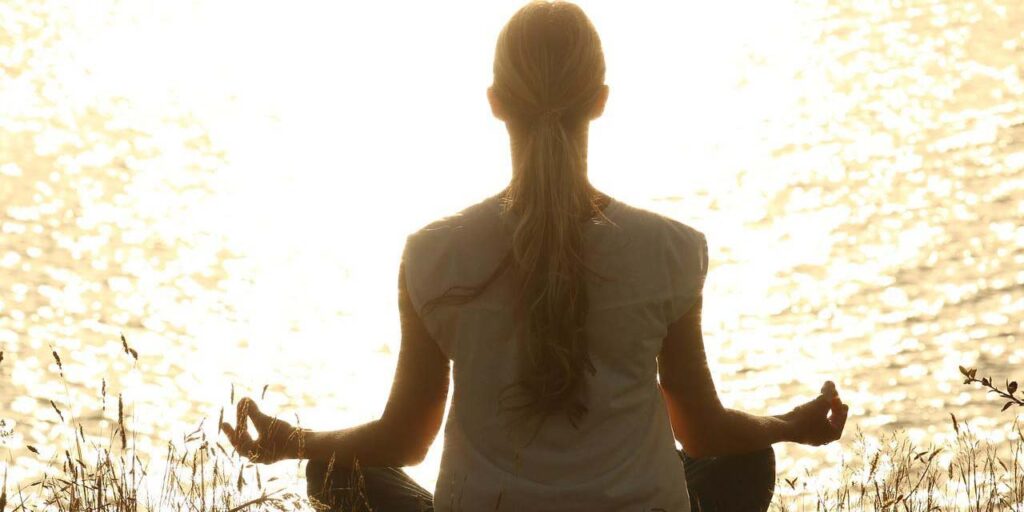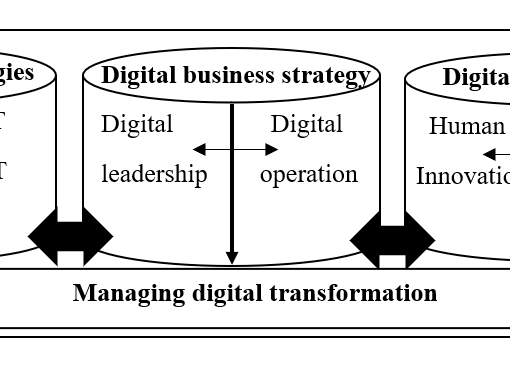Mindfulness has been a long time a buzz word. Many people consider mindfulness a recipe for psychological well-being. And many studies confirm the benefits of mindfulness by analyzing its effects using questionnaires and MRI scanning of the brains of people who participated in the experiments (Boccia et al. 2015). But what exactly does mindfulness do, what are mindfulness skills, and how do they develop?
Most likely, when talking about mindfulness, one can imagine a person sitting with legs crossed and eyes closed. And that’s not far from reality – mindfulness indeed is trained through practising meditation. The concept of mindfulness was popularized by Jon Kabat-Zinn, who adopted Buddist meditation techniques and created Mindfulness-Based Stress Reduction training, MBSR (Kabat-Zinn 2022). This training proved to be effective as a single practice and combined with Self-Leadership (Sampl et al. 2017) and Cognitive Behavioural Therapy (Segal et al. 2002). Mindfulness increases attention, improves relationships, emotional balance and stress resilience, and decreases anxiety (Moore 2022). But what is the mechanism behind it?
Mental gym – how ”brain muscles” grow
From the neuroscience point of view, practising meditation at least for some weeks changes the brain structure (He et al. 2019; Fox et al. 2014; Laneri et al. 2017). It is the same effect as if one goes to the gym and does push-ups. In the case of a ”mental gym”, one grows one’s own brain tissue. It was found in many studies that regular meditation practice increases such parts of the brain as the attention network, emotion regulation network, and insula while decreasing the activity in the default mode network. These parts of the brain are responsible for attention, emotional regulation and social connectivity. Therefore, people who meditate regularly have improved ability to direct attention, have better emotional balance and are sociable and happy. And there comes another question – how to meditate?

Developing five facets of mindfulness
The mindfulness training usually touches on five facets: Observing, Describing, Acting with awareness, Non-judging of Inner Experience, and Non-reactivity to Inner Experience.
Observing means noticing feelings, thoughts and sensations happening in the present moment. Describing deals with giving short labels to emotions, thoughts and sensations in words. Acting with awareness implies being attentive to what is happening in the present moment. Non-judging of Inner Experience is aimed at developing equanimity and accepting thoughts and feelings without judgement. And finally, Non-reactivity to Inner Experience refers to not being drawn by emotions, allowing them to come and go. (Baer 2006). Various mindfulness exercises are aimed at practising these activities. But the primary skill in mindfulness is to develop a habit of regular practice. They say the best meditation is done meditation.

At the SLEM project, entrepreneurial self-leadership and mindfulness training have been developed with partners from Liechtenstein, Croatia, and Albania. Find link to SLEM here.
The first pilot group tested the exercises, and based on the feedback, the project team developed two courses, The Art of Being Present and The Art of Leading Yourself, that will be open for degree students and via open university, starting in September 2022. Stay tuned!
Author
Olga Bogdanova works as an RDI Specialist at LAB University of Applied Sciences and is SLEM Project Manager.
References
Baer, R.A., Smith, G.T., Hopkins, J., Krietemeyer, J. & Toney, L. 2006. Using self-report assessment methods to explore facets of mindfulness. Assessment, 13:27–45. Cited 12 Apr 2022. Available at DOI: 10.1177/1073191105283504.Boccia, M. et al. 2015. The Meditative Mind: A Comprehensive Meta-Analysis of MRI Studies. BioMed research international. Cited 12 Apr 2022. Available at DOI: 2015419808–419811.
Fox et al. 2014. Is meditation associated with altered brain structure? A systematic review and meta-analysis of morphometric neuroimaging in meditation practitioners. Neuroscience and biobehavioral reviews. Cited 12 Apr 2022. Available at https://pdf.sciencedirectassets.com/271127/1-s2.0-S0149763414X00060/1-s2.0-S0149763414000724/dx.doi.org/10.1016/j.neubiorev.2014.03.016.
geralt. 2018. Altmann, G. Man, head, silhouette. Cited 25 Apr 2022. Available at https://pixabay.com/illustrations/man-head-silhouette-to-dye-dirt-3591573/
He, B., Zhang, L., Zhuang, Jh. et al. 2019. The effects of different meditation exercises on sleep quality in older people: a network meta-analysis. European geriatric medicine. Cited 12 Apr 2022. Available at https://doi.org/10.1007/s41999-019-00212-1
Kabat-Zinn, J. 2022. Mindfulness Based Stress Reduction Training. Cited 12 Apr 2022. Available at https://mbsrtraining.com/
Laneri, D., Krach, S., Paulus, F.M., Kanske, P., Schuster, V., Sommer, J. and Müller-Pinzler, L. 2017. Mindfulness meditation regulates anterior insula activity during empathy for social pain. Human brain mapping, 38 (8), 4034–4046. Cited 12 Apr 2022. Available at https://doi.org/10.1002/hbm.23646
Moore, C. 2022. What Is Mindfulness? Definition + Benefits (Incl. Psychology). Cited 12 Apr 2022. Available at https://positivepsychology.com/what-is-mindfulness/.
Pexels. 2016. Meditate, woman, yoga. Cited 25 Apr 2022. Available at https://pixabay.com/photos/meditate-woman-yoga-zen-meditating-1851165/
Sampl, J., Maran, T. & Furtner, M.R. 2017. A Randomized Controlled Pilot Intervention Study of a Mindfulness-Based Self-Leadership Training (MBSLT) on Stress and Performance. Mindfulness, 8 (5), pp. 1393–1407. Cited 12 Apr 2022. Available at https://doi.org/10.1007/s12671-017-0715-0
Segal, Zindel V.; Williams, J. Mark G.; Teasdale, John D.; Kabat-Zinn, Jon. 2002. Mindfulness-based cognitive therapy for depression : a new approach to preventing relapse. New York: Guilford Press. Cited 12 Apr 2022.
Links
Link 1. SLEM. 2022. SLEM Academy web page. Cited 25 Apr 2022. Available at https://www.slemacademy.eu/




